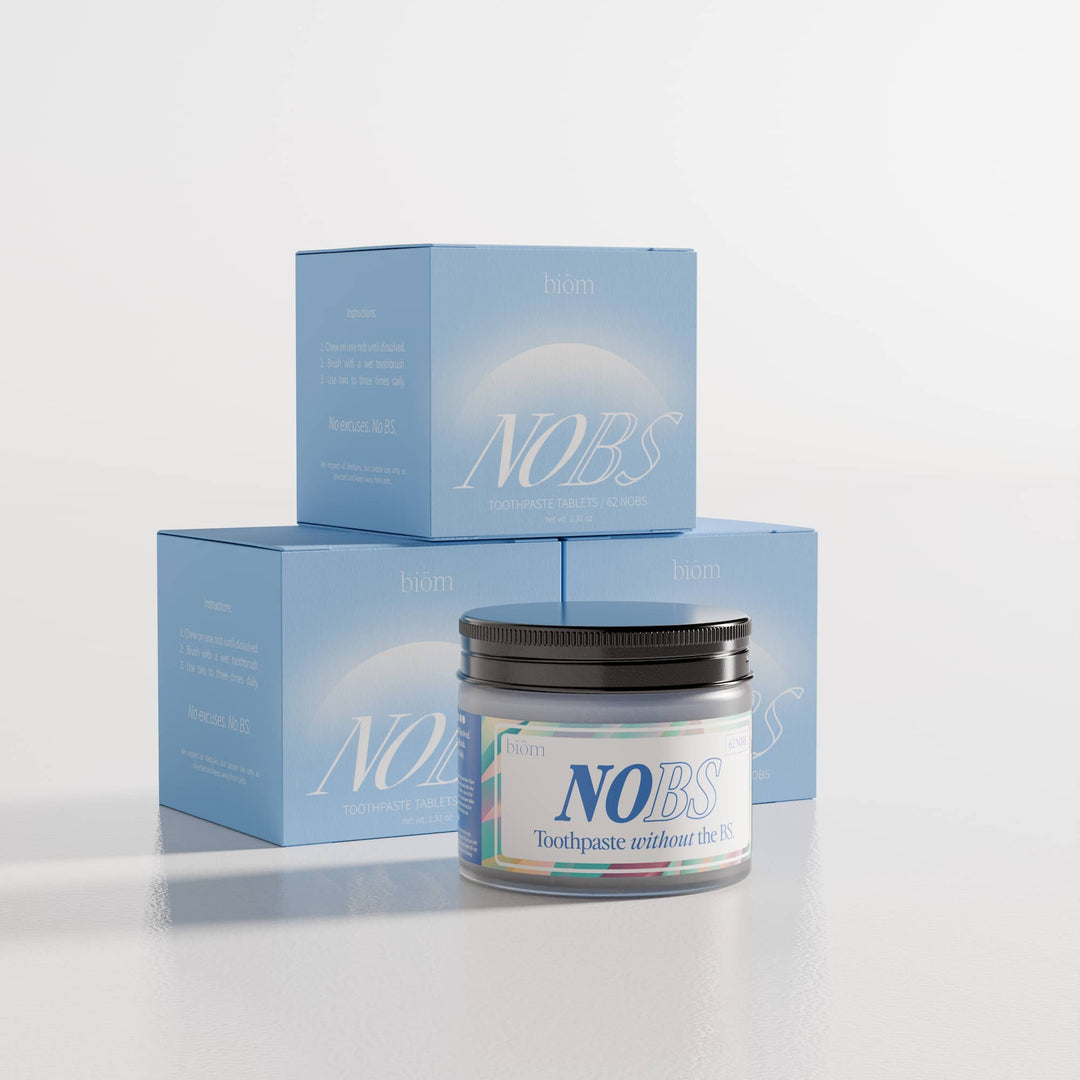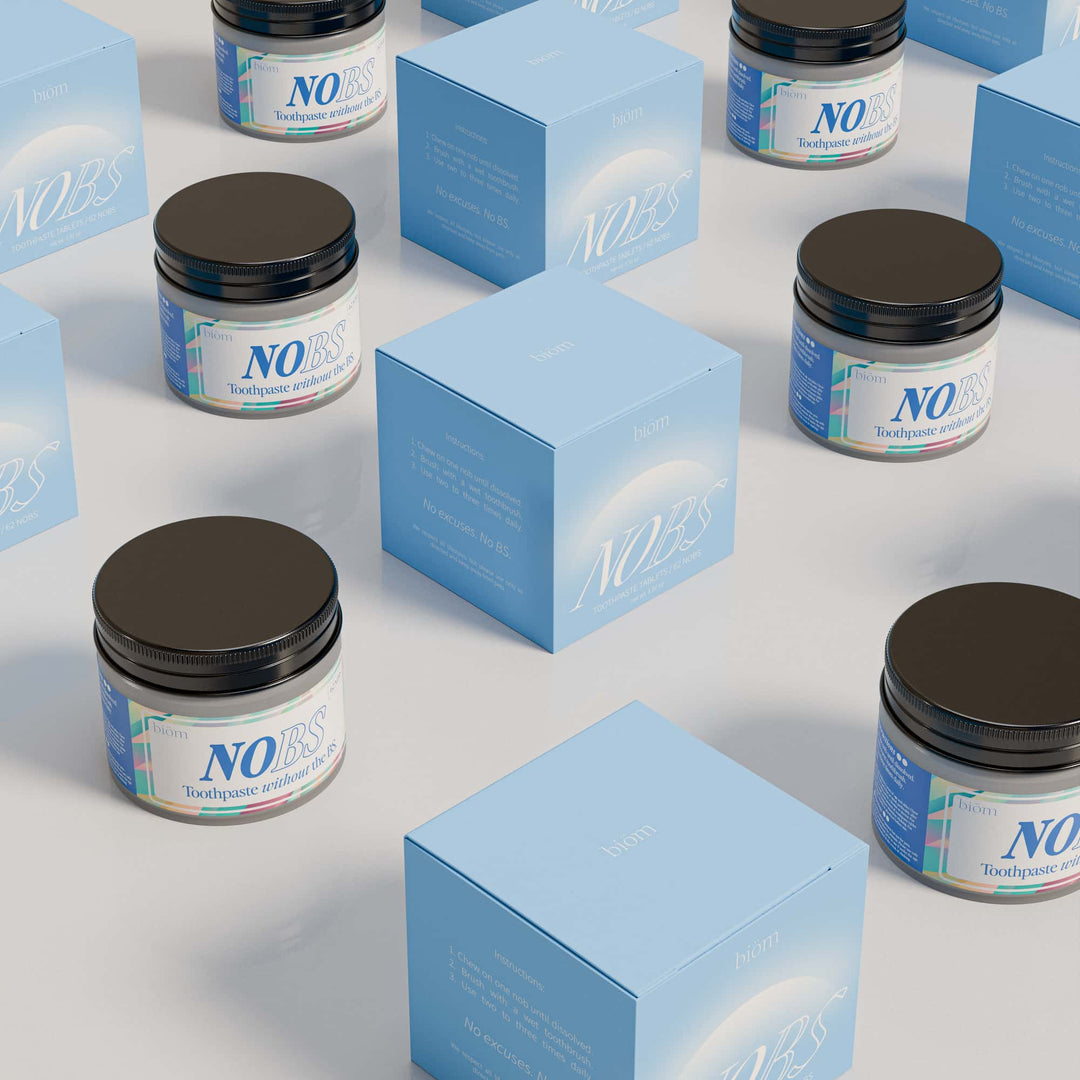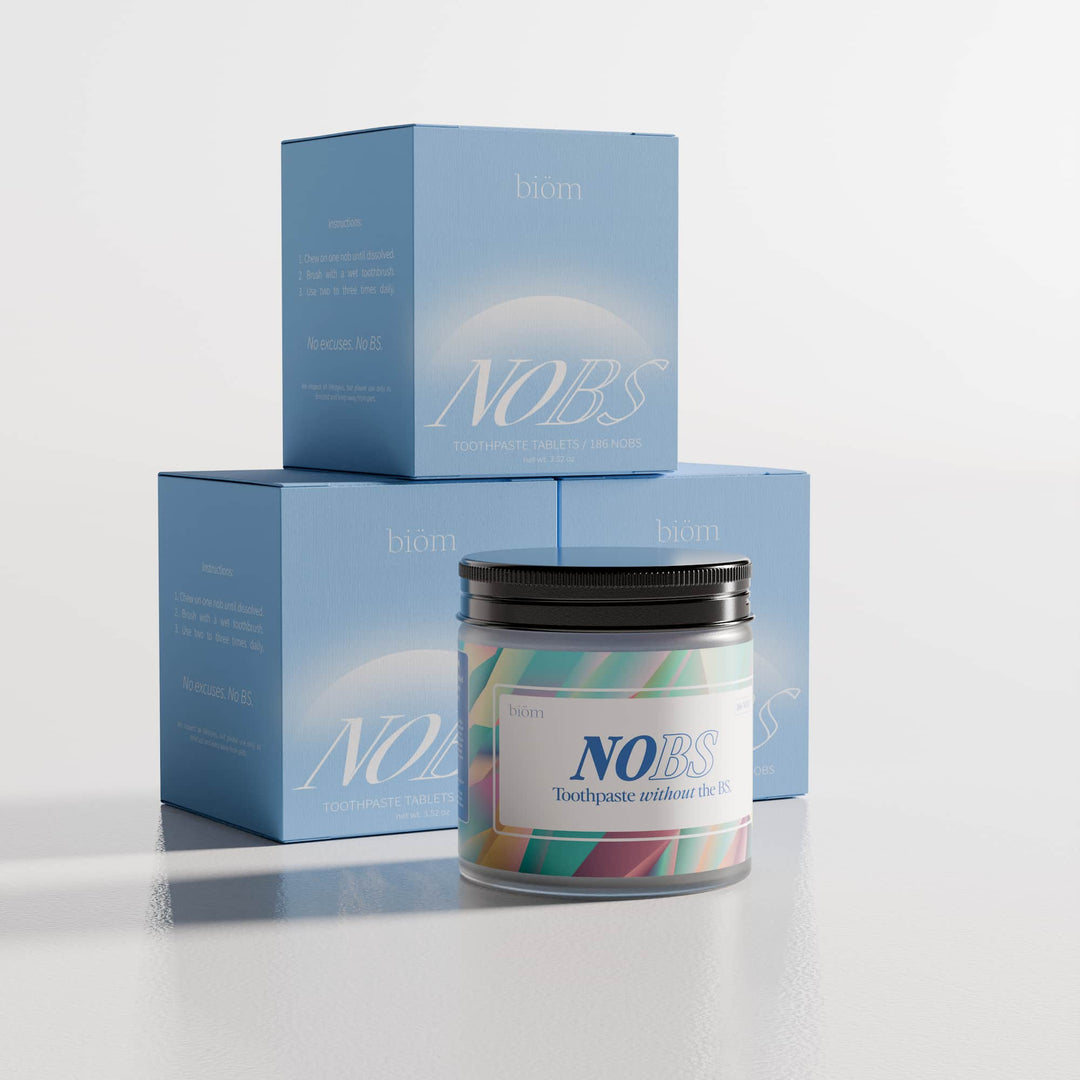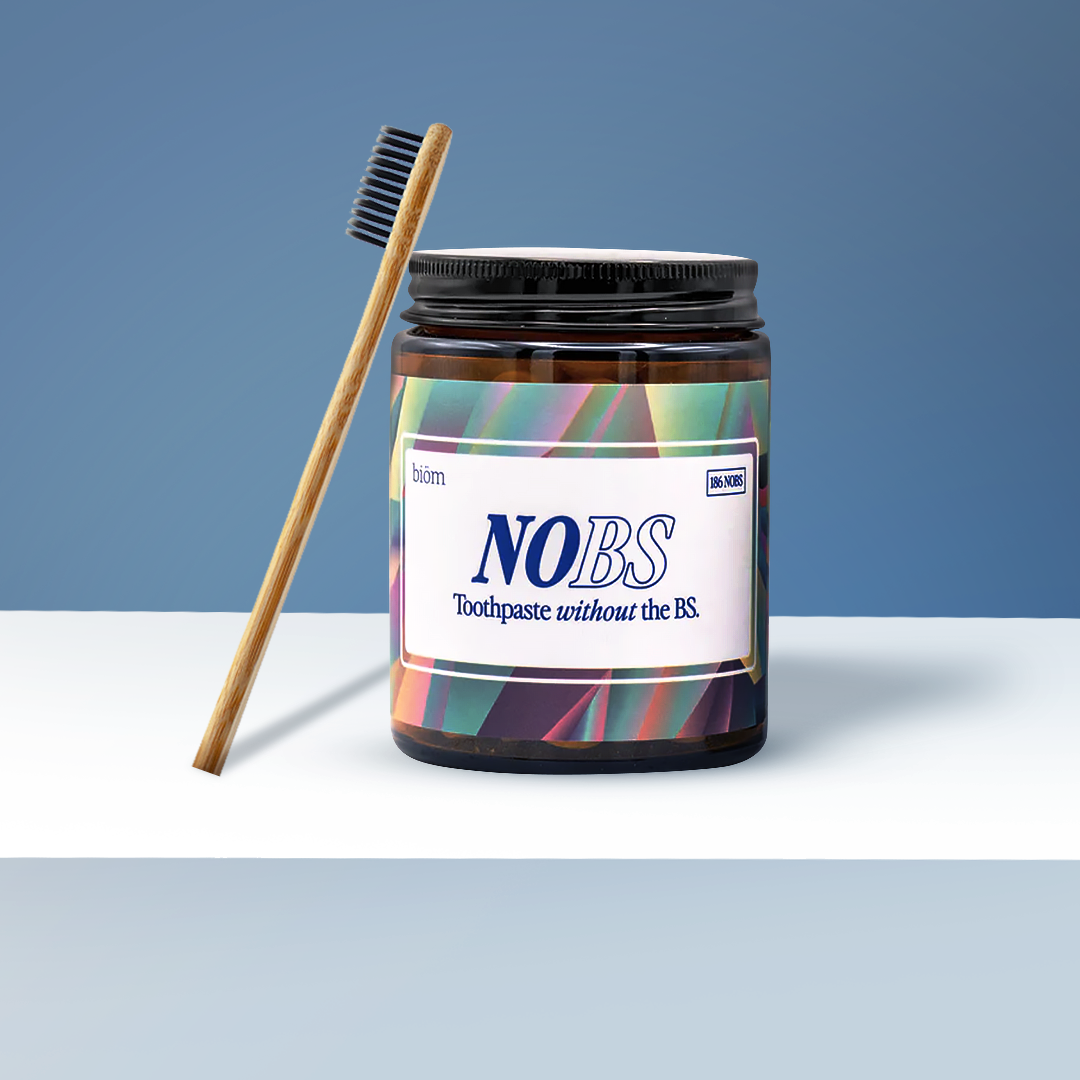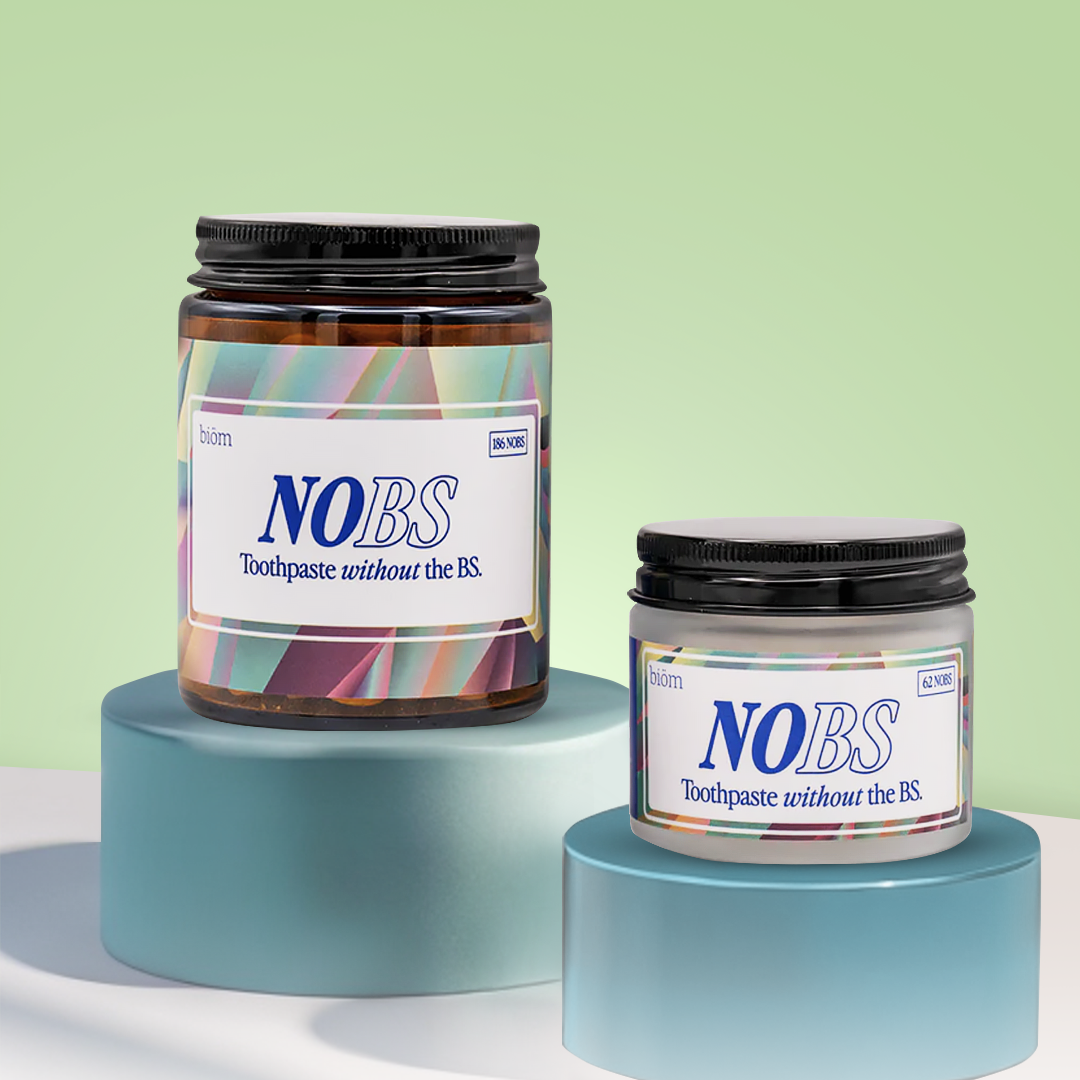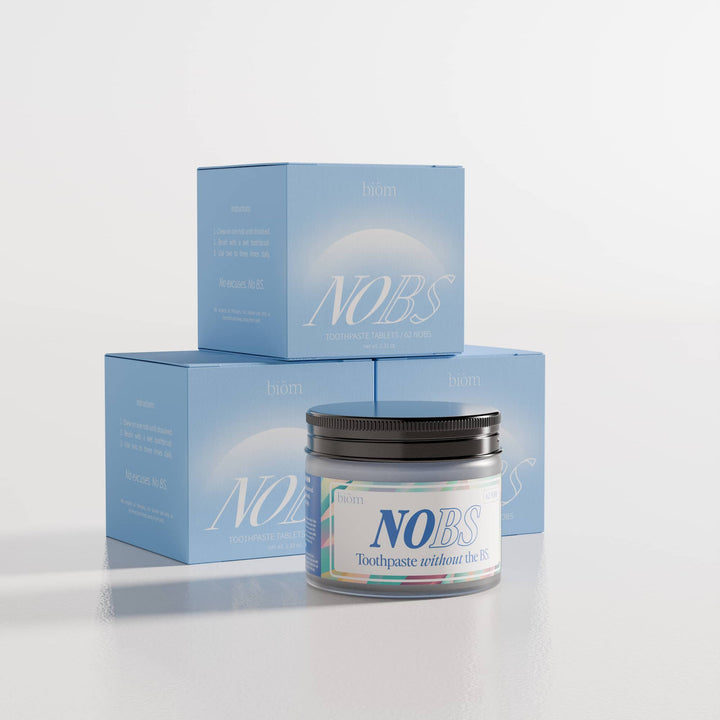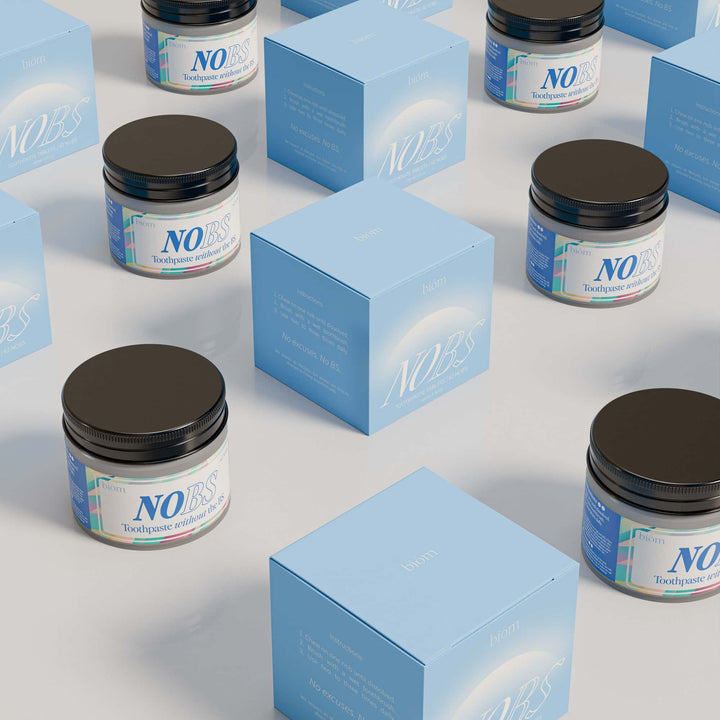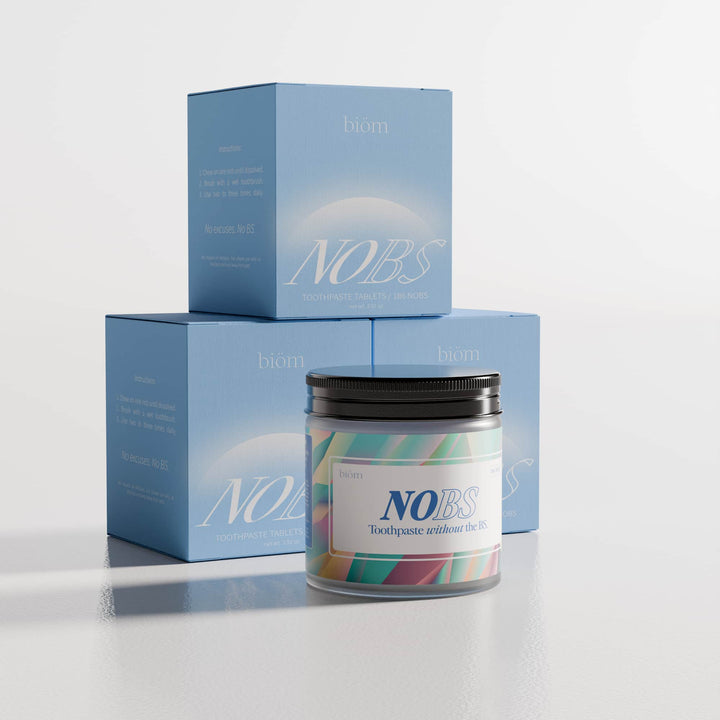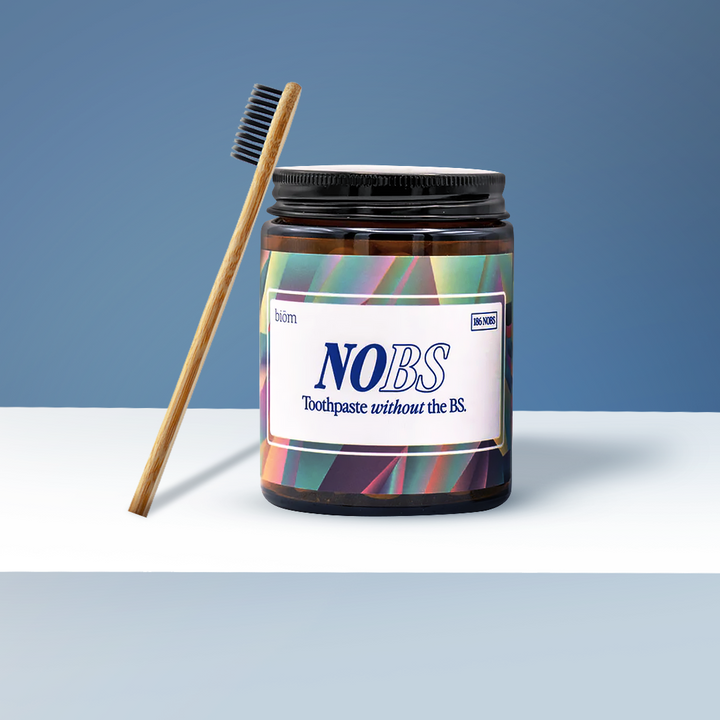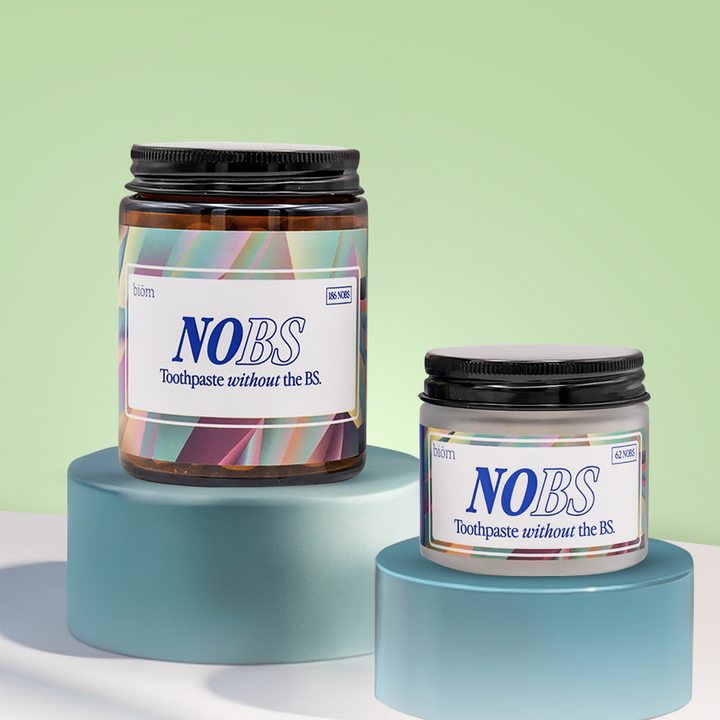Can Tooth Decay Cause Bad Breath?
Yes, tooth decay can cause bad breath because the presence of decay and cavities creates an environment in which odor-causing bacteria thrive.
Essentially, these bacteria release poor-smelling byproducts when they metabolize sugar and other food debris in the mouth. These byproducts include volatile sulfur compounds which smell terrible and can lead to bad breath.
Further, when the tooth structure breaks down due to demineralization, it can create decay pockets where bacteria can hide and multiply. Since these bacteria are difficult to remove with your standard brushing and flossing, they can further contribute to bad breath.
Thankfully, we can prevent bad breath caused by the initial stages of tooth decay by brushing daily with nano hydroxyapatite toothpaste, flossing regularly, and using a tongue scraper nightly.
In this article, I'll explain everything you need to know about tooth decay and how it relates to bad breath.
What is tooth decay?

Tooth decay, a progressive stage of enamel demineralization, is a common dental condition characterized by the gradual degradation of the tooth structure.
The tooth decay process occurs when acids produced by the bad bacteria in our mouth, primarily Streptococcus mutans, interact with sugary foods from our diet. This interaction leads to the formation of acids that attack the tooth's hard outer layer, which we call enamel.
When the acid produced attacks our enamel, this initiates a process that we call demineralization. Over time, demineralization leads to the initial stage of cavity formation which can result in the development of small openings in our enamel. The openings get progressively larger and eventually penetrate deeper into the tooth, causing symptoms like sensitivity and discomfort.
While tooth decay can be reversed, eventually, these untreated cavities can no longer be remineralized and must be treated by a dentist through treatments like dental fillings.
To reverse or prevent tooth decay, we use tools like nano hydroxyapatite toothpaste to stimulate a process called remineralization (aka the opposite of demineralization).
What is a cavity?

Cavities, also known as dental caries, are common dental problems characterized by structural damage to the teeth. In fact, the World Health Organization reports they're the most common disease in the world!
Cavities form due to complex interplay of factors within your oral microbiome. You see, we all have harmful bacteria naturally present in our mouths that form a sticky film called "dental plaque" on our teeth. When we consume sugary foods or acidic fruits, for example, the bacteria feeds on the sugars and then produces acid as a byproduct.
Then, the acid produced attacks our enamel, initiating a process that we call demineralization. Over time, demineralization leads to the initial stage of cavity formation which can result in the development of small openings in our enamel. The openings get progressively larger and eventually penetrate deeper into the tooth, causing symptoms like sensitivity and discomfort.
To reverse tooth decay, we use tools like nano hydroxyapatite toothpaste to stimulate a process called remineralization (aka the opposite of demineralization).
However, you cannot remineralize a cavity.
Signs of Cavities

One of the most common indicators of a cavity is toothache or discomfort, particularly when consuming hot, cold, sweet, or acidic foods and beverages.
This sensitivity occurs as the enamel begins to erode, exposing the underlying dentin and nerve endings. As decay progresses, visible changes may become evident.
This includes the formation of white, brown, or black spots or staining on the tooth's surface, often indicating demineralization and the presence of cavities. This discoloration will be noticeably different from other preventable tooth staining.
In more advanced stages, cavities can lead to visible holes or pits in the tooth structure, making them easily recognizable during a dental examination. Pain while biting down on food is another common sign, as the pressure applied during chewing can irritate the compromised tooth structure.
Additionally, the presence of an abscess, characterized by pus accumulation and gum swelling, can occur in severe cases of untreated cavities.
Other Causes of Bad Breath

Bad breath can have various underlying causes, including:
-
Poor Oral Hygiene: Without proper brushing and flossing practices, plaque can build up on your teeth and gums. This plaque can release odorous gases, causing bad breath.
-
Diet: Consuming strong-smelling foods like garlic, onions, certain spices, and acidic foods can contribute to temporary bad breath. These odors are released into the bloodstream and may be exhaled through the breath.
-
Bacteria in the Mouth: Bacteria naturally present in the mouth can break down food particles, releasing sulfur compounds that result in unpleasant odors. This is a common cause of morning breath.
-
Dry Mouth (Xerostomia): Saliva plays a crucial role in rinsing away food particles and bacteria in the mouth. Dry mouth can occur due to factors such as medication side effects, certain medical conditions, or dehydration, leading to bad breath.
We can treat bad breath through methods like brushing with nano hydroxyapatite toothpaste and using expandable floss daily to remove plaque, odor causing bacteria, and food particles. You can also use a tongue scraper before brushing once or twice daily to help fight bad breath.
Does tooth decay cause bad breath?

Yes, tooth decay, cavities, and gum disease can all cause bad breath. In fact, the presence of cavities and dental decay creates an environment in which harmful bacteria thrive. These bacteria release odorous byproducts as they metabolize sugars and food debris in the mouth.
One of the byproducts produced by these bacteria is volatile sulfur compounds (VSCs), which have a distinct and unpleasant odor. As tooth decay progresses, it can lead to the breakdown of tooth structure, exposing deeper layers of the tooth, including dentin and the pulp chamber.
These areas can harbor bacteria and contribute to the release of VSCs which contributes to the bad breath. Additionally, cavities cause bad breath by trapping food particles and bacteria, creating hidden pockets of decay that can emit odorous gases.
How to Fix Bad Breath from Tooth Decay

We can address the causes of tooth decay by taking measures such as:
-
brushing twice daily with nano hydroxyapatite toothpaste
-
flossing with expandable floss at least three times per week
-
using a tongue scraper nightly to get rid of harmful bacteria
-
and eating a healthy diet low in acidic or sugar foods
Specifically, brushing your teeth at least twice a day for two minutes each with nano hydroxyapatite and a soft-bristled toothbrush will help remove plaque and disrupt the growth of harmful bacteria.
In fact, nano hydroxyapatite is a biomimetic agent that mimics the natural composition of our permanent teeth and supports remineralization. Basically, nano hydroxyapatite toothpaste deposits calcium and phosphate ions back into enamel which strengthens it and makes it more resistant to demineralization.
Of course, visiting the dentist regularly and limiting sugary and acidic foods are also essential steps to take to promote good oral health. Instead, consider adding natural probiotics to your diet such as fermented foods or calcium rich foods to support your overall health.
Will getting a filling fix my bad breath?

Getting a dental filling to address a cavity can help improve bad breath if the cavity was a significant contributor to the odor.
Cavities can create an environment where harmful bacteria thrive and release foul-smelling byproducts, which contribute to bad breath. By treating the cavity with a filling, the source of the bacterial activity and odor is eliminated, which can lead to an improvement in breath odor.
However, we should note that bad breath can have multiple causes, including factors unrelated to cavities, such as:
-
poor oral hygiene
-
gum disease
-
dry mouth
-
dietary choices
-
and underlying medical conditions.
So, if bad breath persists despite addressing a cavity with a filling, be sure to talk to your dentist about the best treatment plan for your unique condition.
Summary: Does tooth decay cause bad breath?

Yes, tooth decay does cause bad breath. Tooth decay and cavities are created by harmful bacteria that feed on sugars in our mouths, producing odorous acids as byproducts. These acids also lead to the erosion of tooth enamel and the formation of cavities.
Addressing tooth decay through professional dental treatments like fillings or dental restorations can help eliminate the source of bad breath associated with the decay. That said, bad breath isn't always caused by tooth decay. In many cases, it can be caused by poor oral hygiene, gum disease, and even dry mouth.
In many cases, you can stop, prevent, and reverse tooth decay and its odorous consequences by brushing daily with remineralizing toothpaste, flossing, and using a tongue scraper nightly.
Frequently Asked Questions
How do you get rid of bad breath from tooth decay?
To get rid of bad breath tooth decay, the primary step is to seek prompt dental treatment for the decayed tooth. A dentist can address the cavity by removing the decayed portion and restoring the tooth with a filling or appropriate dental restoration. This treatment removes the source of bacterial activity and odor. Additionally, maintaining good oral hygiene practices, such as regularly brushing with remineralizing toothpaste and flossing, can help prevent further tooth decay and the associated bad breath.
What does tooth decay smell like?
Tooth decay itself does not have a distinct odor that is easily identifiable by smell. However, the bad breath (halitosis) associated with tooth decay can have an unpleasant odor. This odor is often described as foul, sour, or similar to the smell of decayed or rotting materials. The specific scent may vary depending on factors such as the type of bacteria present in the mouth, the extent of tooth decay, and the presence of volatile sulfur compounds (VSCs) produced by bacteria as they metabolize food particles and sugars in the mouth.
Can a rotten tooth give you bad breath?
Yes, a rotten or severely decayed tooth can contribute to bad breath. When a tooth is extensively decayed, it creates an environment where harmful bacteria thrive. These bacteria release foul-smelling byproducts as they metabolize sugars and food debris in the mouth. Among these byproducts are volatile sulfur compounds (VSCs), which have an unpleasant odor and can lead to bad breath.


